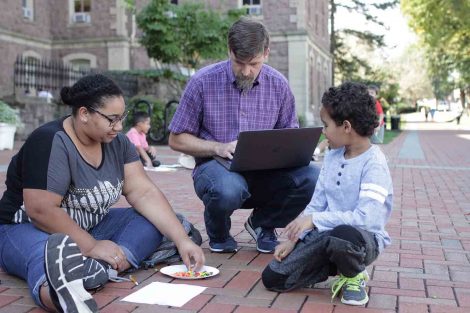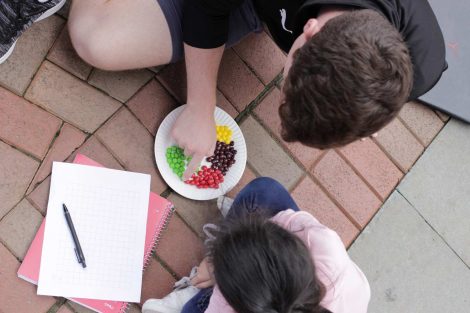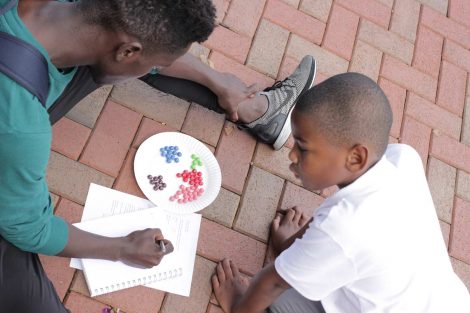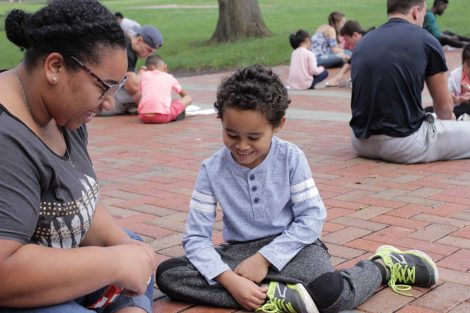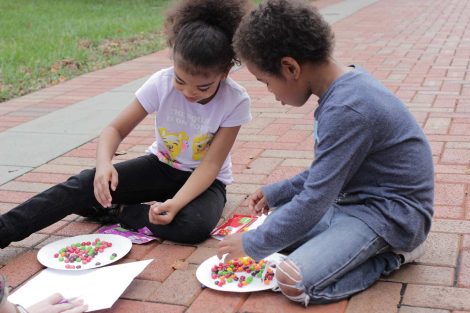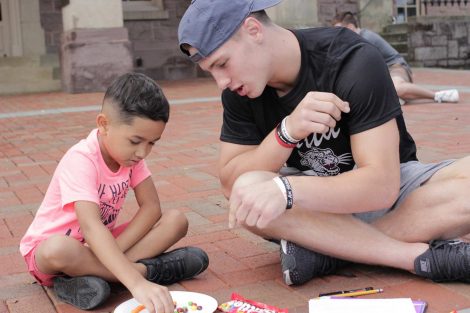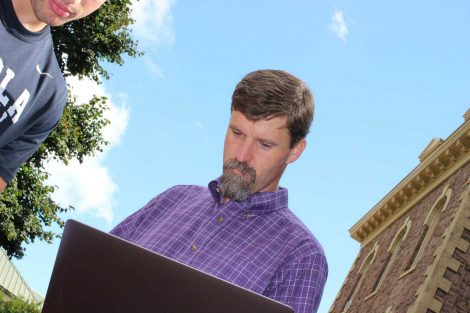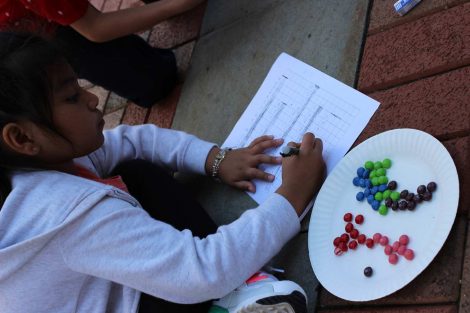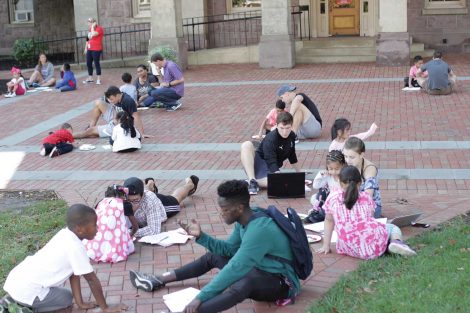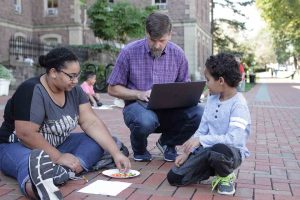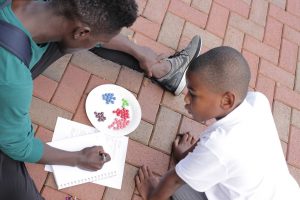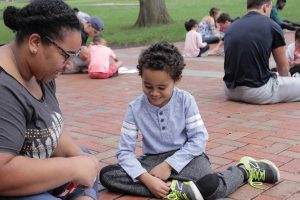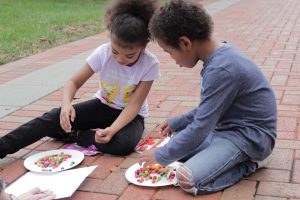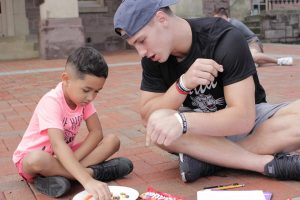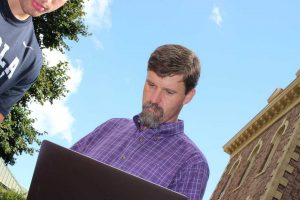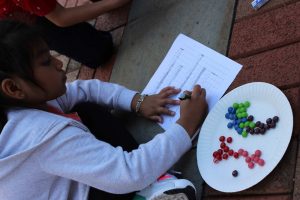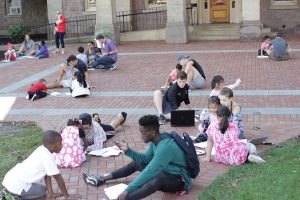Photos and story by Stephen Wilson
Cheston Elementary first-graders joined mathematics students and Trent Gaugler, assistant professor of mathematics, for a tasty lesson in probability. Lafayette students paired up the elementary students and led them through a procedure called the χ² (chi-squared) test.
Sound like a bitter math pill? Candy helps.
Together the students looked at whether the distribution of colors in the packets of Skittles was equal. So they made color guesses, tore open bags, and saw what color distributions they obtained.
It introduces the concept of randomness and variability.
Gabrielle Martone ’19 leveraged her experience as a babysitter to help prepare for the lesson.
“I tried to theme my lesson by using TV shows or movies, like Doc McStuffins, Paw Patrol, and The Incredibles 2, to have them engage and understand the concepts by framing it around the show,” she says. “The lesson did more than I could have imagined as it gave the kids confidence to see that they can understand what we are learning, that they can grasp college-level ideas.”
The count may have been skewed, depending on the student’s ability to resist the temptation of eating the data.
The day was coordinated by the Landis Center for Community Engagement. As part of their Aspirations program, Cheston teachers partner with Lafayette faculty to co-create curriculum that challenges the college students to take what they are learning and translate it for a younger student.
Gaugler sees the partnership as a success.
“I love these types of projects, for so many reasons. Obviously, it is a fantastic experience for the Cheston students. We want them to come to Lafayette, connect with current students, hopefully learn a little something, have fun, and ultimately see that college is something that can and should be on their radar for the future,” he says.
“For my students, it gives them a different mode of engagement. I have consistently found that students engage more fully when people from outside the traditional paradigm are involved. Nobody wants to hear another lecture, and this gives them a new and creative way to express how well they understand course content.”
If only all content could be as easily digestible.
